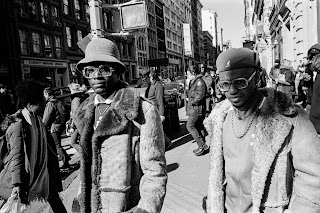people watching and street photography III.
John Thomson (1837 - 1921) was one of the first photographers to travel to the Far East, documenting the people, landscapes and artefacts of eastern cultures. Upon returning home(England), he turned his attention to the people of London and collaborated with socialist journalist Adolphe Smith. Together they photographed and interviewed people they met on the streets of London – including locksmiths, flower sellers, shoeblacks and musicians – building up a detailed picture of the London poor at the time.
The photographs and accompanying detailed descriptions were published in monthly as Street Life in London in 1876 and 1877. The photographs record the plight of the poor in Victorian London. This is considered an early pioneering example of documentary photojournalism.
Professor of Photography, Mehmet Bayhan, describes Ara Güler as:
“Looking for social layers and traces as much as any
sociologist.”
Ara Güler says:
“We collect the visual history of today’s earth. To me, visual history is more important than art. The function of photography is to leave documentation for coming centuries. .. I am not actually a landscape photographer. I am a photographer of living breathing people, of workers.”
The Arcades Project, Walter
Benjamin:
The domestic interior moves outside. It is as though
the bourgeois were so sure of his prosperity that he is careless of façade, and
can exclaim: My house, no matter where you choose to cut into it, is façade.
Such façades, especially, on the Berlin houses dating back to the middle of the
previous century: an alcove does not jut out, but-as niche-tucks in. The street
becomes room and the room becomes street. The passerby who stops to look at the
house stands, as it were, in the alcove.
The flaneur as counterpart of the "crowd”. The
consummate flaneur is a bohemian, a deracine. He is at home not in his
class but only in the crowd-which is to say, in the city. Excursus on the bohèmien.
His role in the secret societies. Characterization of professional conspirateurs.
The end of the old bohème. Its dissociation into legal opposition and
revolutionary opposition.




Comments
Post a Comment